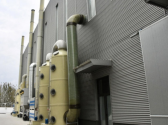Domestic DRAM capacity overflows overseas, Korean industry is rumored to be reducing DDR4 capacity supply
2024/11/18
Domestic DRAM industry capacity has expanded significantly, expanding from the domestic market to the overseas market, resulting in intensified industry competition.
Domestic DRAM capacity has been increased in large quantities, and consumer DDR4 is the first to bear the brunt. Oversupply will lead to intensified price competition. Not only Changxin Storage is actively expanding production, but Fujian Jinhua, which was once sanctioned by the United States, has also moved towards DDR4 mass production.
Taiwanese memory module industry revealed that the current domestic memory factory DDR4 quotation is 5% cheaper than the second-hand goods circulating on the market, and the price is almost half the price of the three major international DRAM companies. Under domestic low-price competition, the two major Korean industry companies are rumored to reduce their DDR4 capacity and are forced to accelerate development towards high-end applications.
Although Trump's new policy has not yet been implemented, it has already brought a high degree of uncertainty to the domestic semiconductor industry. The industry pointed out that domestic memory manufacturers are actively seeking overseas outlets recently. Although domestic DRAM is not included in the official US blacklist restrictions, it still tries to avoid exporting to the United States, Europe and other regions.
It is understood that domestic manufacturers hope to enter the huge Indian market through Taiwanese manufacturers in a roundabout way, mainly considering the relatively tense atmosphere between China and India. If they can use the brand awareness of Taiwanese manufacturers, they will be able to dilute the sensitive color of the red supply chain.
Industry insiders revealed that domestic memory manufacturers took the initiative to come to the door, hoping to expand their overseas production tentacles as much as possible before the handover of the new and old US governments. Now DDR4 production capacity supply is no longer a problem, and the production capacity of domestic DRAM manufacturers has increased significantly, and the chaos of oversupply in the market has emerged.
Due to the continuous dumping of a large number of DDR4 chips in the domestic market in recent months, and the resale of a large number of second-hand DDR4 products disassembled from server applications, now that domestic DRAM manufacturers have joined the war, the price of DDR4 has fallen in a bloodbath.
In terms of the price of DDR4 disassembled boards, it used to be about 70% to 80% of the quotes of international manufacturers. However, since the second half of 2024, the market price competition has intensified, and it has now dropped to 50% to 60% of the original factory quotes. The prices released by domestic DRAM manufacturers recently are more flexible, which will be about 5% cheaper than the price of disassembled boards, reflecting that the pressure on each company to clear its DDR4 inventory has been extremely severe.
Recently, the Hefei plant of Changxin Storage, a representative domestic DRAM manufacturer, reported that due to human negligence, about 65,000 wafers had to be scrapped. In the case of failure to deliver on time, Changxin Storage issued an internal announcement, including the plant director, deputy plant director, and the head of the operation center. Many senior executives were punished. The industry believes that it may be caused by improper management of mask versions when switching equipment.
However, according to the plan, Changxin Storage's overall DRAM production capacity has grown from 70,000 pieces per month in 2022 to 200,000 pieces per month in 2024. The Hefei 2 plant and the Beijing plant will be expanded successively, and the total production capacity will reach 300,000 pieces in the future. It is estimated that the production capacity will account for 11% of the global DRAM market in 2024. Through production expansion and technology upgrades, Changxin Storage has become one of the top four DRAM manufacturers in the world.
As for Fujian Jinhua, which was once suspended due to US sanctions, it is reported that under the leadership of Huawei, it has become the best example of the transformation of domestic semiconductor companies. At present, Fujian Jinhua's DRAM production capacity continues to increase, and the DDR4 8Gb 3200 specification has become the main mass production. Although Jinhua has not disclosed the scale of mass production, it is estimated that the monthly production capacity will reach about 100,000 pieces by the end of 2024, and it is expected to expand to 120,000 pieces in 2025.
According to current market research, the spot market price of DDR4 8Gb chips is about $1.13, but the price quoted by domestic memory manufacturers can be between $0.75 and $1.0.
The memory supply chain said that driven by domestic government policy subsidies and localization policies, domestic DRAM manufacturers are not afraid of losing money at all, and local memory module manufacturers are willing to adopt localization. Manufacturers such as Longsys, BIWIN, and TWSC are considered to be the first echelon. With the assist power of domestic memory production capacity, they are expected to gain price and cost advantages in the consumer market.
Transcend Chairman Shu Chongwan said recently that the substantial expansion of domestic DRAM production capacity has indeed brought oversupply pressure to the market. Although industrial control customers will hardly use domestic DRAM at present, the impact on consumer products will be more obvious. Now Transcend's industrial control product revenue accounts for about 60%, but in order to maintain a fixed purchase scale from the original factory, the consumer market cannot be completely faded out, and a certain revenue share must still be maintained.
As domestic DDR4 spreads to the terminal market, it is reported that the two Korean manufacturers plan to significantly reduce the proportion of DDR4 production capacity and develop towards high-end DDR5 and HBM3 and above specifications.
The industry believes that through the reduction of DDR4 production capacity supply by large manufacturers, the phenomenon of DRAM oversupply in 2025 is expected to improve, but Taiwanese DRAM manufacturers will probably bear the brunt and will face off with domestic manufacturers in the DDR4 battlefield. The memory industry is not only an industry that competes on production capacity, but also on process upgrade speed. Once Changxin and other manufacturers accelerate capacity expansion and technology speed upgrades towards DDR5, the competitive pressure in the DRAM industry in the future may increase day by day.




